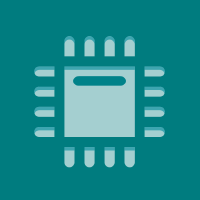Topic Menu
► Topic MenuTopic Editors





Application of IoT on Manufacturing, Communication and Engineering
Topic Information
Dear Colleagues,
The 2023 IEEE 5th Eurasia Conference on IoT, Communication and Engineering (IEEE ECICE 2023) will be held in Yunlin, Taiwan, on 27–29 October 2023, and it will provide a unified communication platform for researchers in the fields of IoT and advanced manufacturing. The booming economic development in Asia, particularly of the leading manufacturing industries, including automobile, machinery, computer, communication, consumer product, flat panel display to semiconductor and micro/nano areas, has attracted increasing attention among universities, research institutions and many industrial corporations. This conference aims to provide a broad international forum for researchers, engineers, and professionals from all over the world working in the areas of IoT and manufacturing to discuss and exchange various scientific, technical and management aspects across the wide spectrum of the society. The theme of the conference is set as smart manufacturing, focusing on new and emerging technologies. This Topic “Application of IoT on Manufacturing, Communication and Engineering”, includes five journals, Symmetry, Applied Sciences, Sensors, Coatings and Energies, which will publish excellent papers about relative fields. It enables interdisciplinary collaboration of science and engineering technologists in the academic and industrial fields, as well as international networking. Researchers with innovative ideas or research results in all aspects of advanced manufacture are encouraged to submit their contributions.
Topics of interest include, but are not limited to, the following:
- Internet and IoT technology;
- Communication science and engineering;
- Computer science and information technology;
- Computational science and engineering;
- Electrical and electronic engineering;
- Mechanical and automation engineering;
- Advanced machining and forming processes;
- Micro- and nano-fabrication;
- Surface manufacturing processes;
- Gears manufacturing;
- Bio-medical manufacturing;
- Precision engineering measurement;
- Robotics and automation;
- Additive manufacturing technology;
- Smart manufacturing technology for Industry 4.0;
- Environmental sustainability.
Prof. Dr. Teen-Hang Meen
Prof. Dr. Chun-Yen Chang
Prof. Dr. Charles Tijus
Prof. Dr. Po-Lei Lee
Prof. Dr. Cheng-Fu Yang
Topic Editors
Keywords
- Internet of Thing
- smart manufacturing
- communication
- micro and nano fabrication
- engineering
Participating Journals
| Journal Name | Impact Factor | CiteScore | Launched Year | First Decision (median) | APC | |
|---|---|---|---|---|---|---|

Applied Sciences
|
2.7 | 4.5 | 2011 | 16.9 Days | CHF 2400 | Submit |

Coatings
|
3.4 | 4.7 | 2011 | 13.8 Days | CHF 2600 | Submit |

Energies
|
3.2 | 5.5 | 2008 | 16.1 Days | CHF 2600 | Submit |

Sensors
|
3.9 | 6.8 | 2001 | 17 Days | CHF 2600 | Submit |

Symmetry
|
2.7 | 4.9 | 2009 | 16.2 Days | CHF 2400 | Submit |

MDPI Topics is cooperating with Preprints.org and has built a direct connection between MDPI journals and Preprints.org. Authors are encouraged to enjoy the benefits by posting a preprint at Preprints.org prior to publication:
- Immediately share your ideas ahead of publication and establish your research priority;
- Protect your idea from being stolen with this time-stamped preprint article;
- Enhance the exposure and impact of your research;
- Receive feedback from your peers in advance;
- Have it indexed in Web of Science (Preprint Citation Index), Google Scholar, Crossref, SHARE, PrePubMed, Scilit and Europe PMC.

